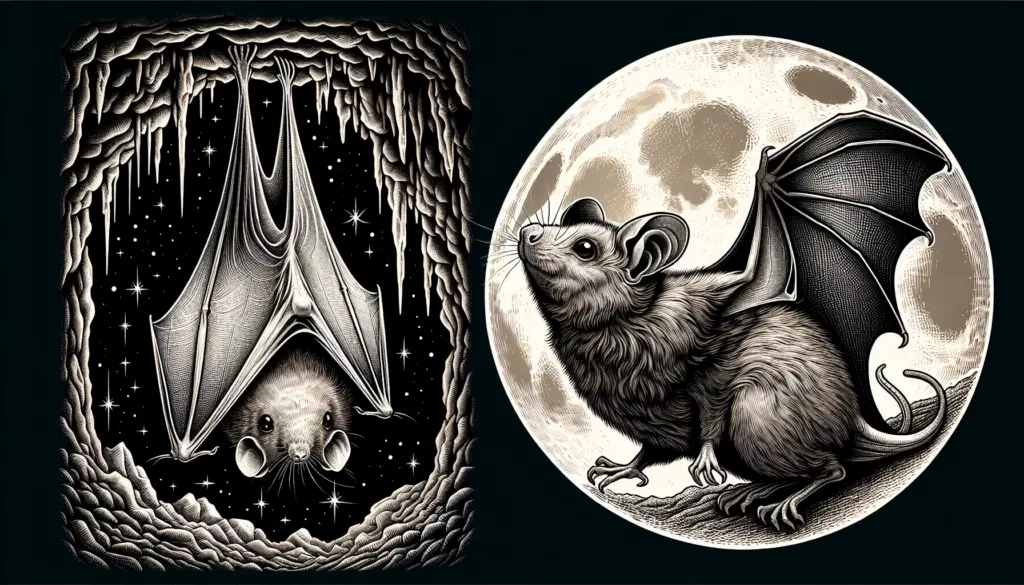Bats are mammals, not rodents.
Understanding the Classification of Bats
Bats belong to the order Chiroptera, which is entirely separate from Rodentia, the order that includes rodents like rats and mice.
This distinction means that despite some superficial similarities, bats and rodents are not closely related.
Bats are the only mammals capable of sustained flight, setting them apart from all other mammalian species.
Why Bats Are Often Mistaken for Rodents
The misconception that bats are rodents may stem from their small size and some similarities in facial features.
Both bats and rodents have fur-covered bodies and can be found in a variety of environments worldwide.
However, their evolutionary paths diverged millions of years ago, leading to significant differences in anatomy and behavior.
Unique Characteristics of Bats
Bats have a unique skeletal structure that supports their wing membranes, allowing them to fly with remarkable agility.
Their echolocation abilities enable them to navigate and hunt insects in complete darkness.
Unlike rodents, bats have a much longer lifespan relative to their size, with some species living over 20 years.
The Importance of Bats in Ecosystems
Bats play a crucial role in controlling insect populations, acting as natural pest control agents.
Some species are pollinators, aiding in the reproduction of plants like bananas, peaches, and agave.
Their guano is rich in nutrients and used as a valuable fertilizer in some regions.
Consequences of Misclassification
Mislabeling bats as rodents can lead to misunderstandings about their ecological importance.
It might also affect conservation efforts, as rodents often have a negative reputation that does not apply to bats.
Educating the public about the true nature of bats can help in their preservation and the protection of biodiversity.
Examples of Different Bat Species
The Bumblebee Bat, also known as Kitti’s hog-nosed bat, is the smallest bat species and one of the smallest mammals in the world.
The Hammer-headed Bat is known for its unique facial structure and is the largest bat in Africa.
Vampire Bats have a specialized diet, feeding on the blood of other animals, which is a trait not found in rodents.
Products That Support Bat Conservation
Installing a bat house can provide a safe roosting place for local bat populations.
The OBC Bat House is highly rated for its durable construction and effectiveness in attracting bats.
It’s said that people appreciate its easy installation and positive impact on reducing backyard insects.
Find This and More on Amazon
How Bats Differ from Rodents
Bats have wings formed by stretched skin membranes, whereas rodents do not have this adaptation.
Their dental structures are different; bats have teeth adapted for their varied diets, while rodents have ever-growing incisors.
Bats also have unique reproductive cycles, often having fewer offspring with longer gestation periods compared to rodents.
The Role of Bats in Culture and Mythology
Bats have been featured in folklore around the world, sometimes symbolizing rebirth or communication.
In some cultures, they are seen as good luck and are associated with longevity and happiness.
Understanding their positive symbolism can help shift public perception and promote conservation.
Frequently Asked Questions About Bats
Do bats carry diseases?
While bats can carry diseases like rabies, the risk to humans is minimal when bats are left undisturbed.
Can bats see, or are they blind?
Bats are not blind; many have good eyesight, but they rely on echolocation for navigating in the dark.
How can I attract bats to my garden?
Planting night-blooming flowers and installing a bat house can encourage bats to visit your garden.
Connecting Bats with Other Wildlife
Just as bats play a vital role in their ecosystems, animals like deer are also crucial for environmental balance.
Understanding animal behavior enhances our appreciation of nature’s complexity.
For example, learning about why a deer stares at you can offer insights into wildlife interactions.
Final Thoughts on Bat Classification
Recognizing bats as mammals distinct from rodents highlights the diversity within the animal kingdom.
By appreciating their unique qualities, we can better support conservation efforts.
Educating others about bats helps dispel myths and encourages coexistence with these fascinating creatures.


